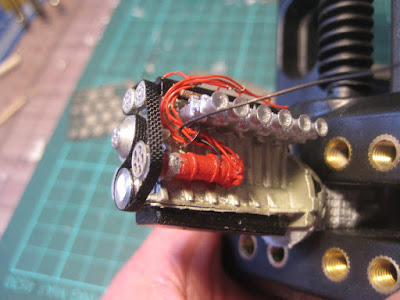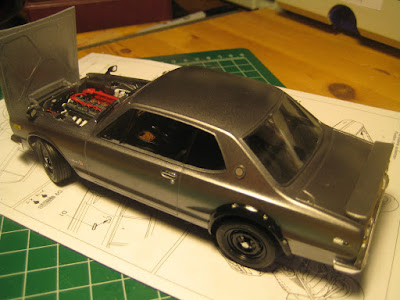
There are two Monogram kits of this unique little car, one very simple and designed for slot car use. I built the more complex Monogram version way back when; this time out it's the same kit but in the German Revell packaging. The paint and numbering scheme is for the 1964 Targa Florio winner, driven by Colin Davis and Antonio Pucci.

The floor pan still has the name Monogram moulded into it.

I stripped the chrome from the valve covers and carburetors, and wired up the twin distributors. The engine in the Fujimi kit of the 356 is much nicer, but this is pretty decent as well.

The chassis is an interesting approach used by Porsche for just this one car. A pair of steel rails (in black) are buried in the door sills and are wrapped in two large fibreglass units, one the undercarriage (shown in the picture) and the other the interior floor and bulkheads.

A third large moulding, consisting of roof and fenders, wraps up the chassis. A hood, two doors and the engine cover wrap up the number of body panels, making it very simple to build (but likely a major pain to restore if rust has gotten into the chassis).

The engine compartment was designed for the new six-cylinder as premiered in the 901 (later renamed 911), but most of the 120 cars made had the proven 4-cam unit, with excess space between engine and bulkhead. The twin distributors take up a fair bit of that extra space.

Stay tuned! This should be finished relatively soon.












































